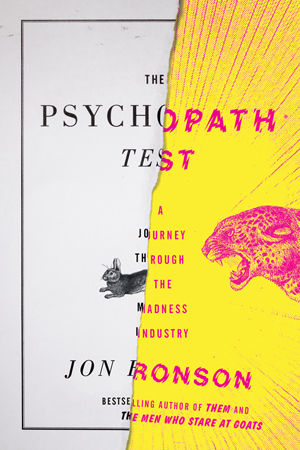Our generation’s preoccupation with “being crazy” and the stigma around seeking help that goes along with it are two things our society could do without.
This mad preoccupation is not defined by our oddities, but rather
our obsession with them. Until recently, I never put much thought into
just how common the fear of being truly diagnosed or seen as “crazy” really is.
Crazy is of course defined as anything
less than the standard for “normal” that
has been set by others.
 Jon Ronson’s The Psychopath Test: A Journey Through the Madness
Industry, highlights the ordinary fear of insanity one might have, and the
not so ordinary members of society. The truth is society devours
dysfunction and failure because it can laugh or gasp at it. No one wants
to read or watch anything that is completely commonplace (whether they are
watching reality show stars or reading about political leaders). The access to
so many more stories about disorders, as well as stories of those mentally
unstable that manage to splash across the news gives people all kinds of new
things to fear.
Jon Ronson’s The Psychopath Test: A Journey Through the Madness
Industry, highlights the ordinary fear of insanity one might have, and the
not so ordinary members of society. The truth is society devours
dysfunction and failure because it can laugh or gasp at it. No one wants
to read or watch anything that is completely commonplace (whether they are
watching reality show stars or reading about political leaders). The access to
so many more stories about disorders, as well as stories of those mentally
unstable that manage to splash across the news gives people all kinds of new
things to fear.
Ronson emphasizes the media is constantly exploiting the madness
in our society, it therefore controls conformity as well. By showing us
what we should not be, it is consequently telling us what we should be. What is
most insane of all in today’s society is that recent generations are so caught
up in fitting in that the fear of being anything but normal is making them feel
insane.
Society so often negatively defines individuals by their flaws. It
should be no surprise therefore that now one must hide anything that could be
viewed as a flaw, turning normal experiences, human emotions, into something
unhealthy. A 2007 survey conducted by the Center for Disease Control and
Prevention, on non-institutionalized civilians in US population across 35
states, showed that 40% of persons in those states were experiencing serious
psychological distress, and of those 53.4% were not receiving any treatment.
Whether the need to conform is creating or exacerbating issues in mental health
is unclear.
Anyone who has every taken an introductory psychology course has
most likely heard a warning: not to self-diagnose or diagnose others. It is
easy to draw connections from classroom knowledge to their own personality
characteristic and of those around them. It would be nearly impossible to
not have at least some of the qualities from the extensive Diagnostic and
Statistical Manual of Mental Disorders (DSM IV), but just one overwhelming case
of anxiety during finals week does not make an anxiety
disorder. These self-diagnostics are exactly what cause the distress,
more so than any actual condition.